Are you struggling to help your young tennis player reach their full potential? Many parents and coaches find it challenging to navigate the complex world of junior tennis development.
The pressure to succeed, the intense competition, and the demanding training schedules can overwhelm even the most dedicated young athletes. Without proper guidance, promising talents may burn out, lose motivation, or fail to progress in their tennis journey.
But what if there was a comprehensive approach to nurturing tennis champions? A method that not only focuses on technical skills but also addresses the mental, physical, and personal aspects of a young tennis player’s development?
Introducing “A Comprehensive Guide to Junior Tennis Development.” This guide offers a holistic approach to help young players thrive on and off the court. From building strong fundamentals to mastering footwork and agility, perfecting swing techniques, and developing mental toughness, we cover all aspects of junior tennis development.
We’ll also explore strategies for balancing tennis with academics, managing tournament play, and nurturing well-rounded athletes. With this guide, you’ll have the tools to support your young tennis player’s journey towards becoming a champion, both in tennis and in life134.
Table of Contents
The Foundation of Success: Building Strong Fundamentals
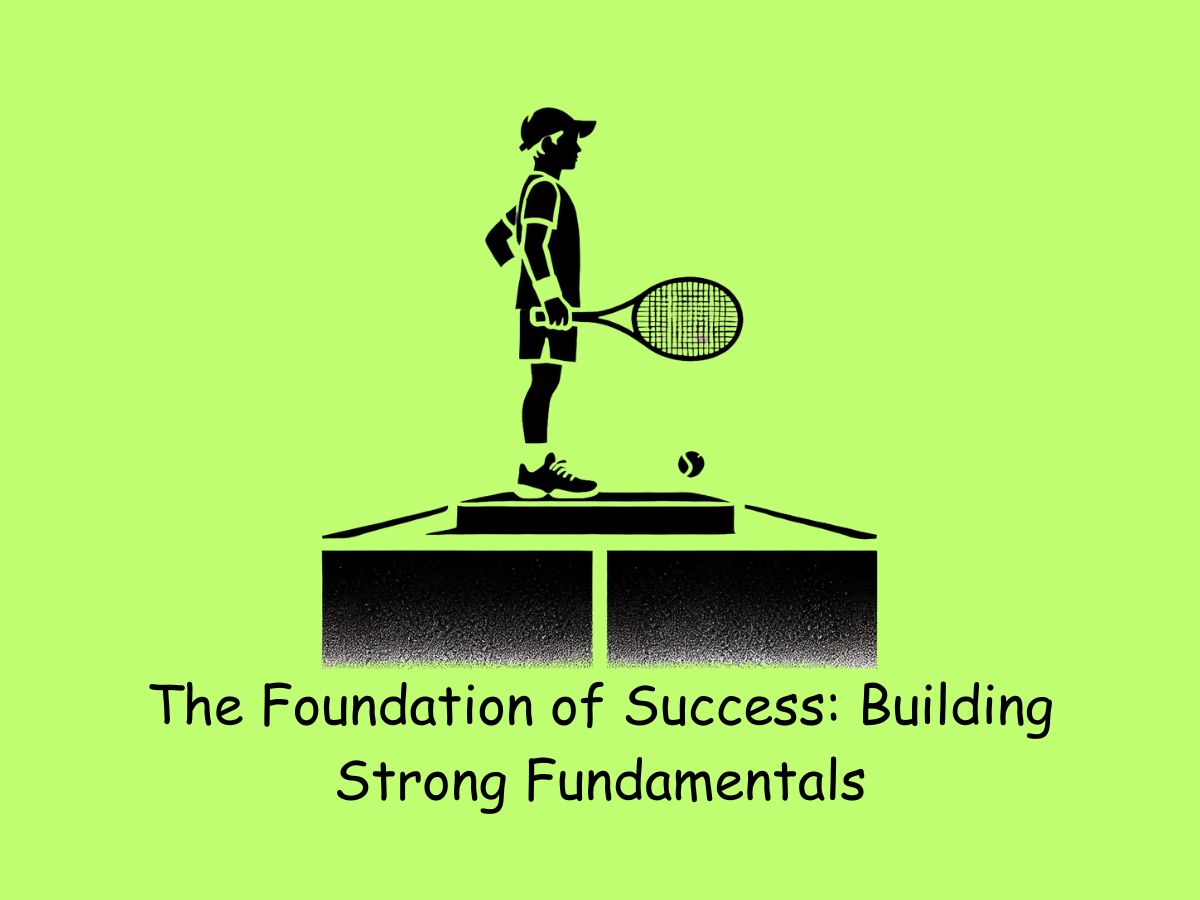
Building strong fundamentals is crucial for young tennis players. It’s not just about hitting the ball; it’s about developing key life skills. Independence is a great starting point. Encourage your child to pack their own tennis bag and drink bottle. This small step can lead to bigger responsibilities later on1.
Responsibility is another important fundamental. Teach your child to take ownership of their tennis journey. This means not making excuses for wins or losses. Instead, focus on their effort and training. This approach helps them grow and learn from every experience on the court1.
Continuous improvement, or “kaizen,” is also essential. Rather than looking for quick fixes, support your child’s daily tennis rituals. This gradual approach leads to lasting success. Lastly, nurture their love for the game. When tennis remains fun, your child will stay motivated and avoid burnout. Remember, the goal is to develop well-rounded athletes who enjoy the sport and grow both on and off the court1.
Mastering the Art of Movement: Footwork and Agility
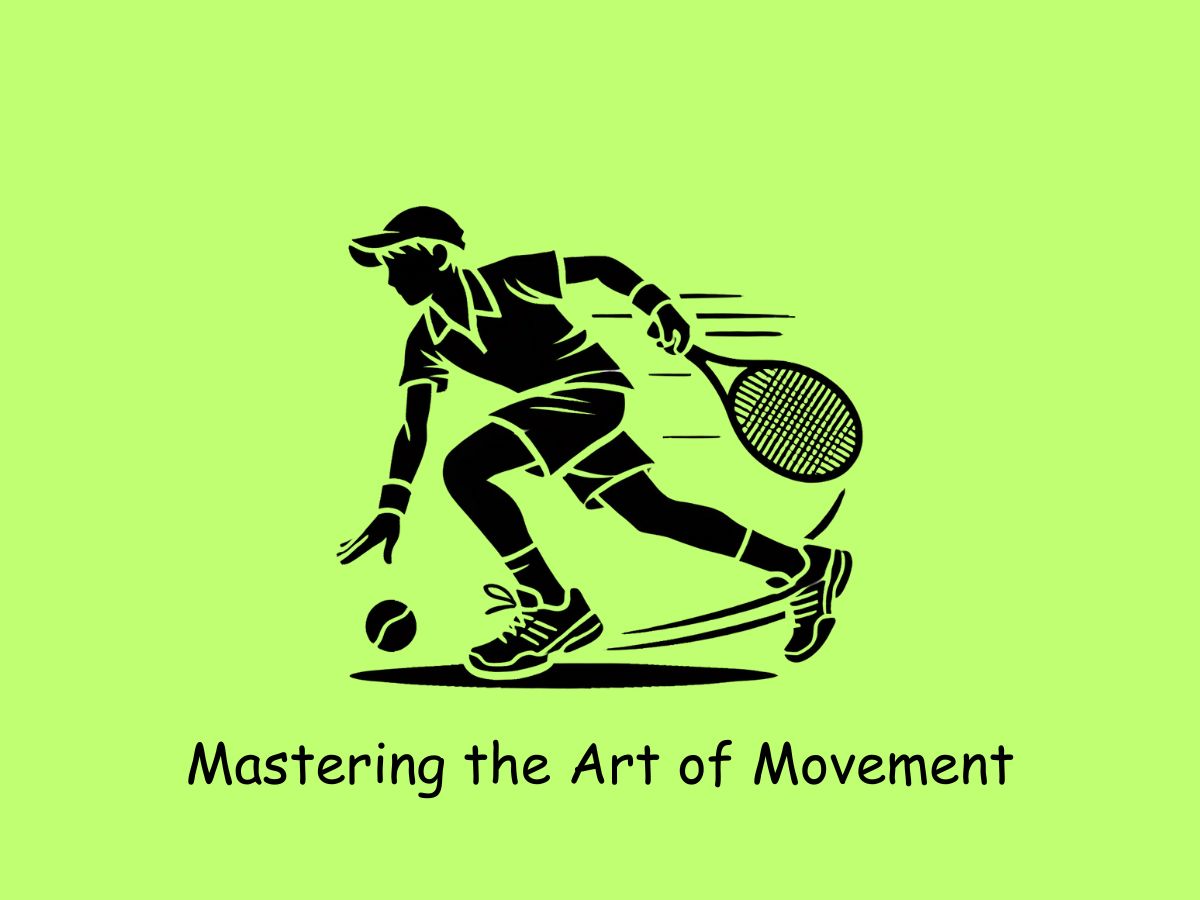
Footwork and agility are key skills for any tennis player. They help you cover the court quickly, react to unexpected shots, and keep your balance during fast-paced rallies. Good movement can make the difference between winning and losing a point2.
One important aspect of agility is learning how to slow down or stop. This is called deceleration. It helps you control your body, stay balanced, and get ready for your next shot. Without good deceleration, you might overstretch or lose your balance, which can lead to injuries2.
To improve agility, try some simple drills. The “Ladder Drill” is great for quick side-to-side movements. Set up an agility ladder on the ground and practice stepping in and out of the squares. You can also do side shuffles without a ladder. These exercises will help you move better on the court and react faster to your opponent’s shots5.
Perfecting Your Swing: Grip and Stroke Techniques
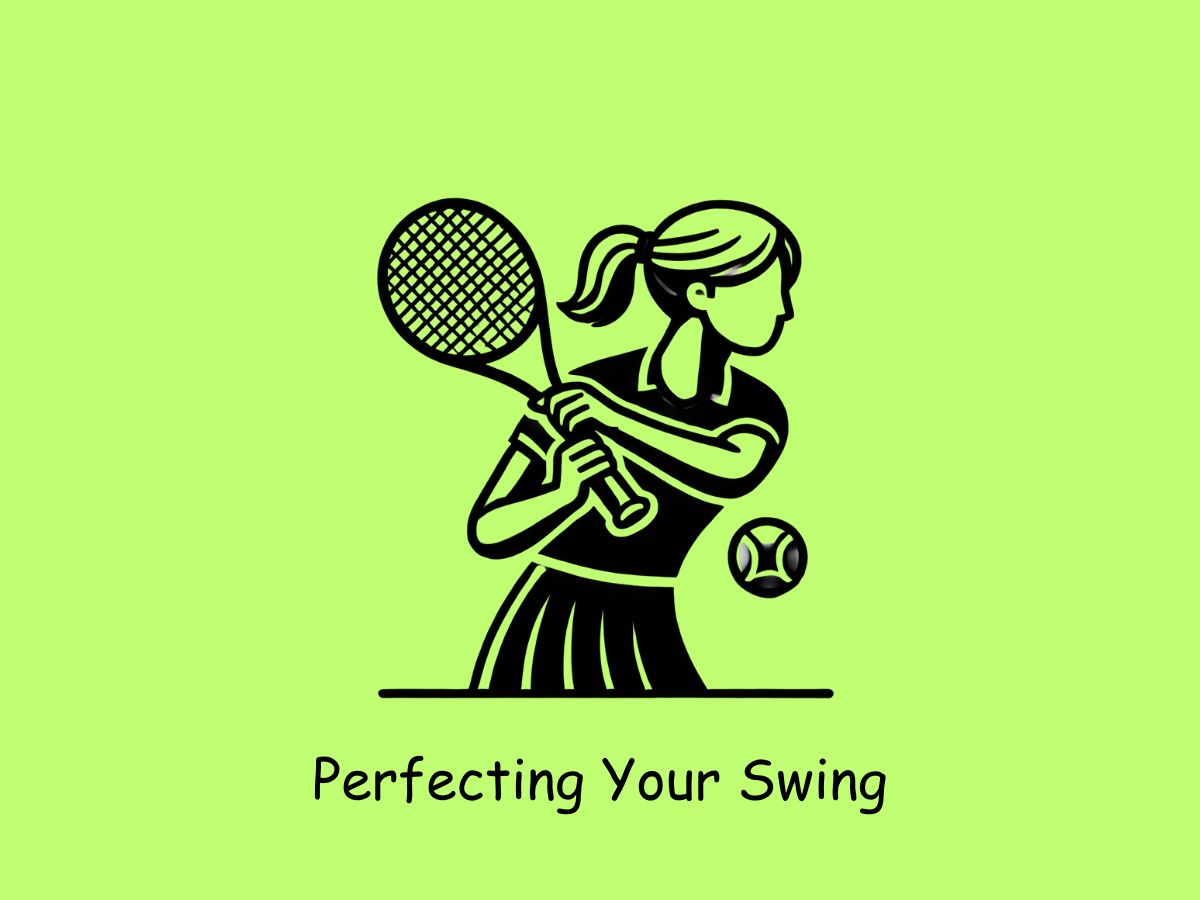
Mastering the right grip is the first step to a great tennis swing. For beginners, the Eastern grip is a good place to start. It’s like shaking hands with your racquet. This grip gives you a nice balance of control and power, making it easier to hit different types of shots4.
When you’re holding the racquet, make sure your grip is firm but not too tight. You want to control the racquet without straining your hand or arm. Practice this grip often until it feels natural. Remember, finding the right grip pressure is important. If you hold too tight, you’ll get tired quickly. If you hold too loose, you won’t have enough control4.
As you get better, you can try other grips like the Semi-Western. This grip can help you hit with more topspin. But don’t rush to learn new grips. It’s better to get really good with the Eastern grip first. Keep practicing, and soon you’ll be hitting powerful and accurate shots with ease4.
Mental Toughness: Developing a Champion’s Mindset
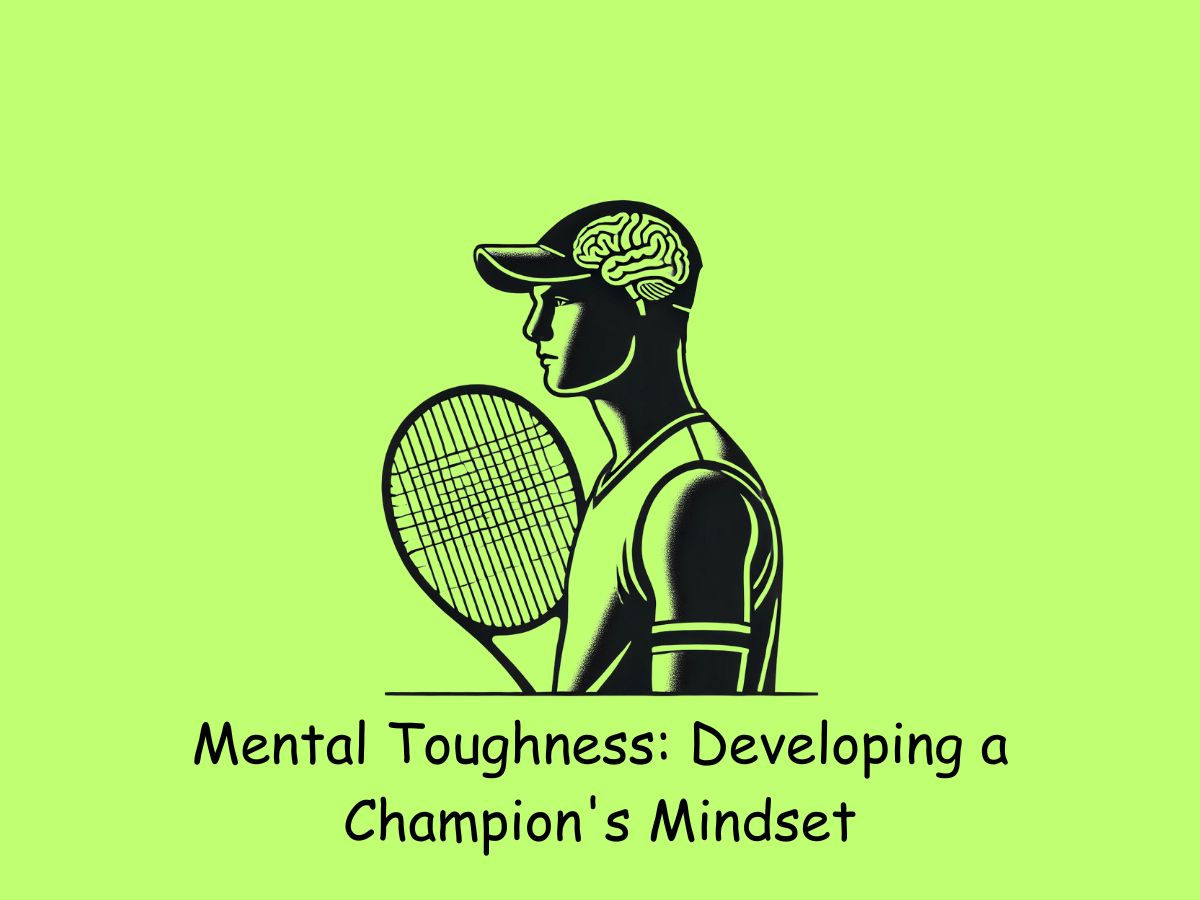
Mental toughness is a key part of success in tennis. It’s not just about hitting the ball well; it’s about staying strong in your mind too. Young players often struggle with tough thoughts and feelings on the court. They might get angry or sad when things don’t go their way. Some get very nervous during big points or find it hard to focus throughout a match1.
To build mental toughness, it’s important to learn how to deal with these challenges. One helpful method is mindfulness. This teaches players how to handle difficult thoughts and emotions, focus deeply during matches, and play big points with confidence1. Coaches play a big role in this too. They can create a positive environment where players feel supported and can grow mentally7.
Another important aspect is understanding the difference between confidence and expectations. Having high expectations can actually hurt your confidence. Instead of expecting to win every match or hit every shot perfectly, it’s better to focus on manageable goals. For example, you could aim to track the ball well during the match. This helps build confidence without putting too much pressure on yourself4.
Physical Fitness: Strength and Conditioning for Young Players
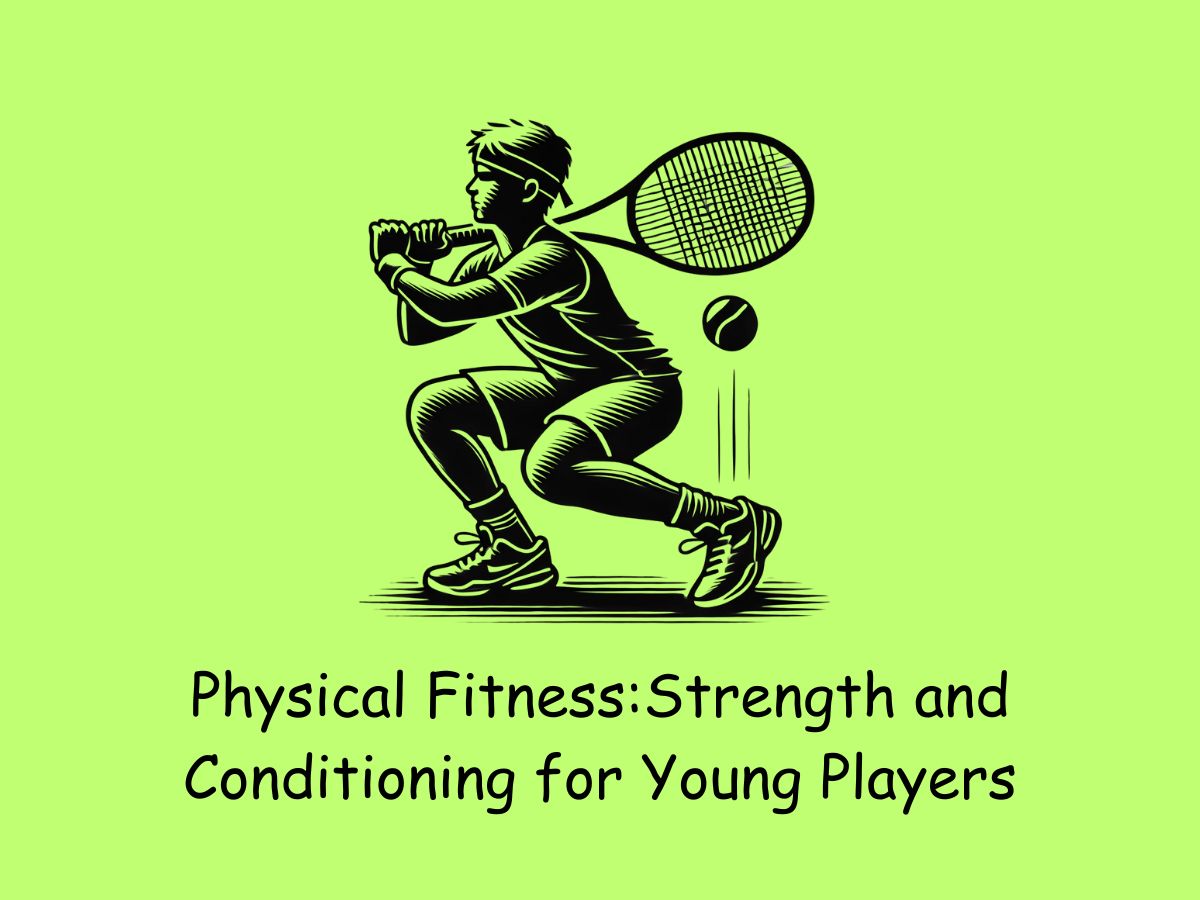
Physical fitness is crucial for young tennis players. It helps them perform better on the court and avoid injuries. A good fitness program should focus on building strength, improving flexibility, and increasing endurance. These elements work together to create a well-rounded athlete who can handle the demands of tennis.
Strength training is important, but it needs to be done carefully for young players. The focus should be on learning proper form and technique rather than lifting heavy weights. Exercises that use body weight, like push-ups and squats, are great for building strength safely. Flexibility exercises, like stretching and yoga, help prevent injuries and improve movement on the court.
Endurance training is also key. This can include running, cycling, or other activities that get the heart rate up. It’s important to make fitness fun for young players. Mixing up activities and including games can keep them engaged and motivated. Remember, the goal is to build a strong foundation that will support their tennis development for years to come.
Game Strategy: Tactical Development and Decision-Making
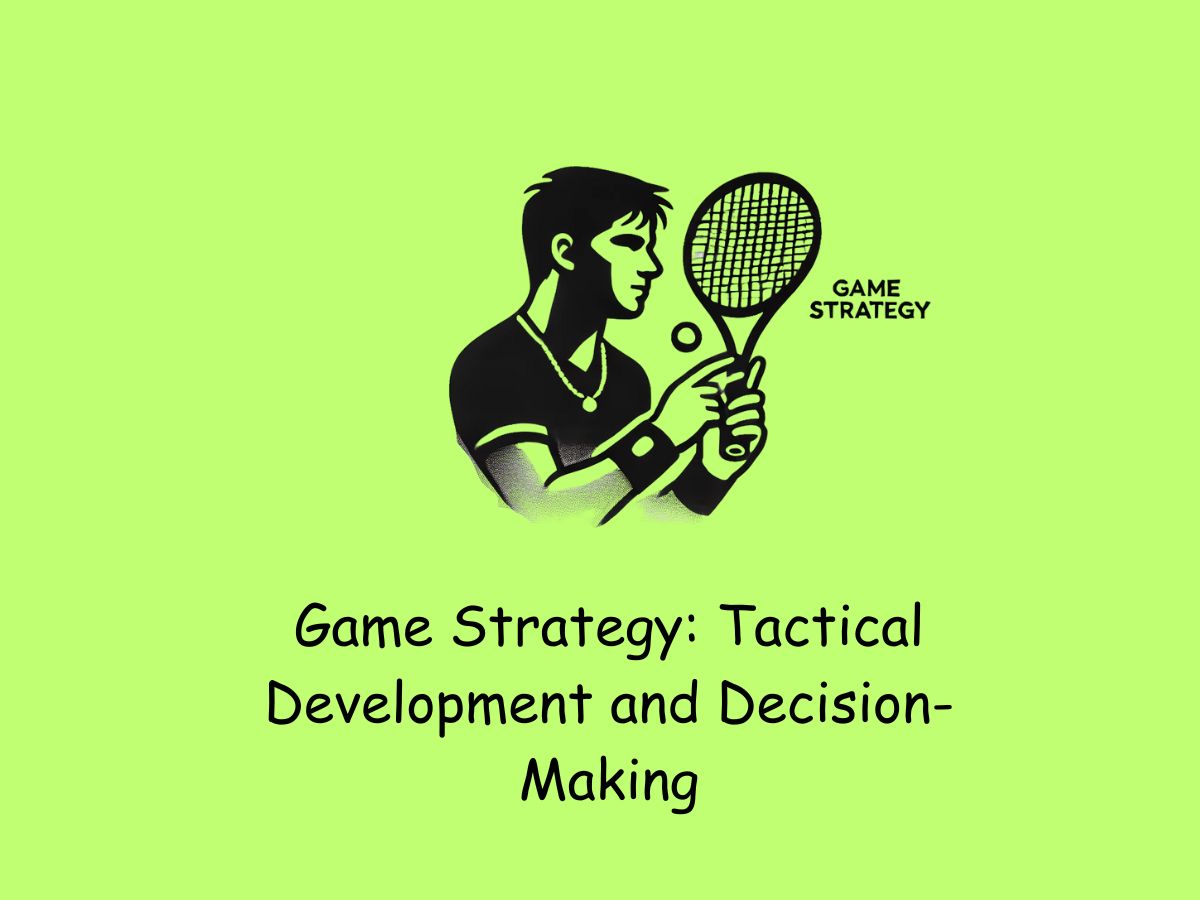
Game strategy is a crucial part of tennis that goes beyond just hitting the ball. It’s about making smart decisions on the court to win more points. There are several key tactics that young players should learn and practice5.
One important strategy is to play to your strengths. Know what shots you’re best at and try to use them often. At the same time, it’s smart to aim for your opponent’s weaknesses. If they struggle with backhand shots, for example, try to hit more balls to that side5. Another useful tactic is to control the court space. This means moving your opponent around and making them cover more ground2.
Variety is also important in tennis strategy. Mixing up your shots can create mistakes from your opponent or give you easier balls to hit. You can also use tactics like attacking the net or bringing your opponent to the net, depending on the situation5. Remember, good strategy isn’t about doing one thing all the time. It’s about having many options and choosing the right one at the right moment.
Balancing Act: Managing Tennis, Academics, and Personal Life
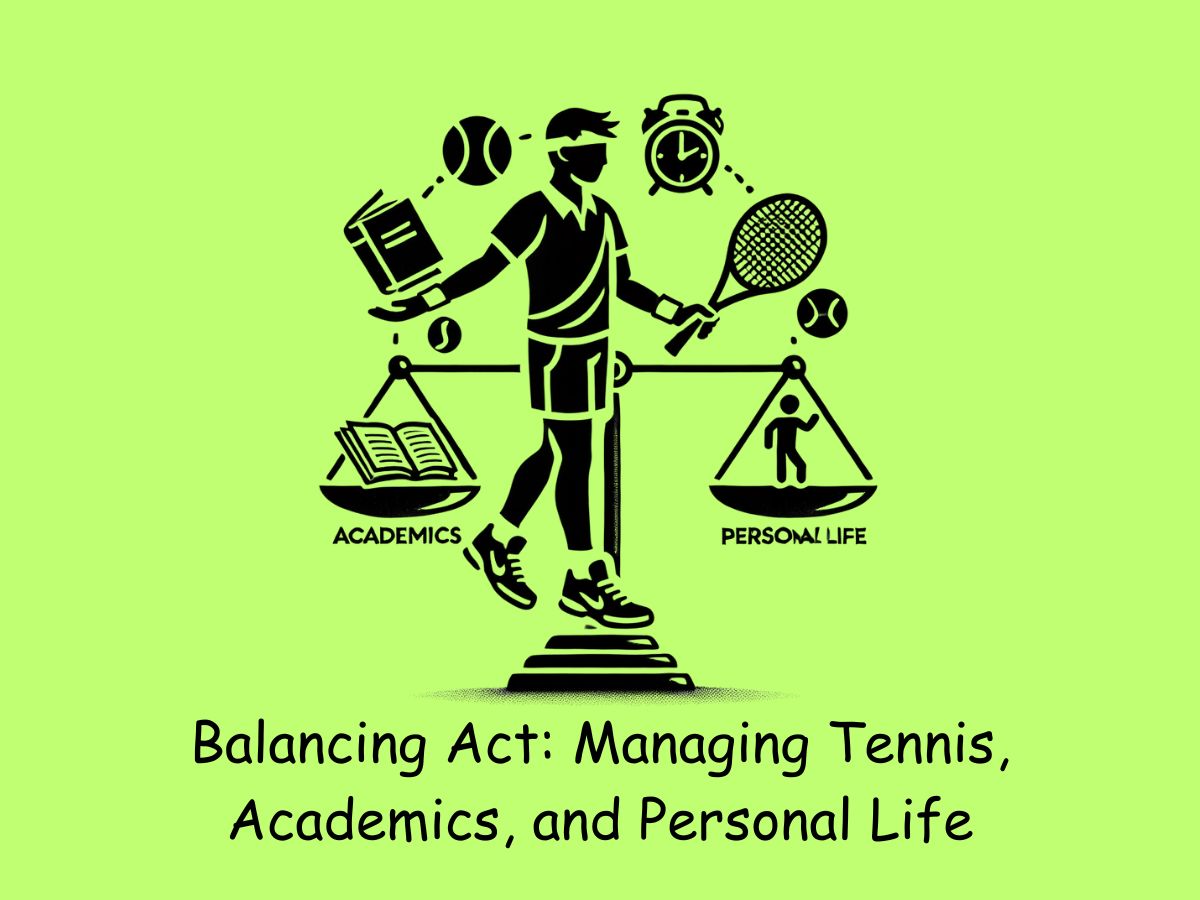
Balancing tennis, academics, and personal life can be challenging for young athletes. It’s like juggling three balls at once – you need to keep them all in the air. The key is to set clear goals and priorities. Think about what you want to achieve in tennis, school, and your personal life. This will help you make smart choices about how to use your time.
Good time management is crucial. Use a planner or digital calendar to schedule your tennis practice, homework time, and other activities. Don’t forget to include time for meals, breaks, and sleep. It’s important to stick to your schedule, but also be flexible when unexpected things come up. Developing a routine will help you build discipline, which is useful in all areas of life.
Remember, it’s not just about tennis and school. You need time for friends, family, and fun too. This balance helps prevent burnout and keeps you happy and healthy. If you’re feeling overwhelmed, talk to your parents, coaches, or teachers. They can help you find ways to manage your time better. With practice, you’ll get better at balancing all parts of your life13.
The Path to Greatness: Tournament Play and Competitive Experience
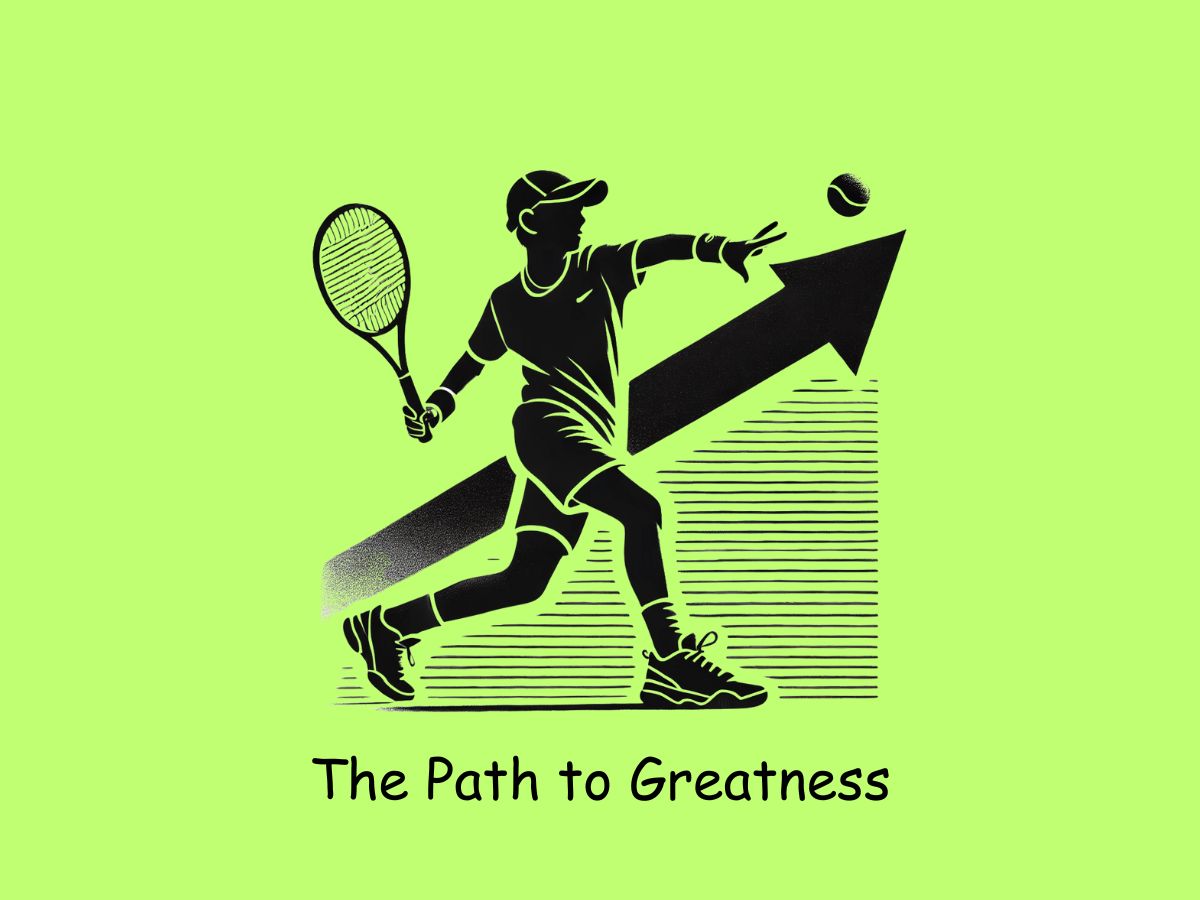
Tournament play and competitive experience are crucial steps on the path to tennis greatness. These events help young players test their skills, learn from others, and grow as athletes. Tournaments aren’t just about winning or losing. They’re chances to apply what you’ve learned in practice to real game situations.
When choosing tournaments, it’s important to pick the right level and number of events. Your coach can help you select tournaments that match your skill level and goals. Remember, playing too many tournaments can lead to burnout, while not playing enough might slow down your progress. It’s all about finding the right balance.
During tournaments, focus on more than just the score. Pay attention to how you handle pressure, make decisions, and adapt to different opponents. These experiences will help you become a better player and person. After each tournament, take time to reflect on what you did well and what you can improve. This will help you set goals for your next practice sessions and tournaments25.
Beyond the Court: Nurturing Well-Rounded Athletes
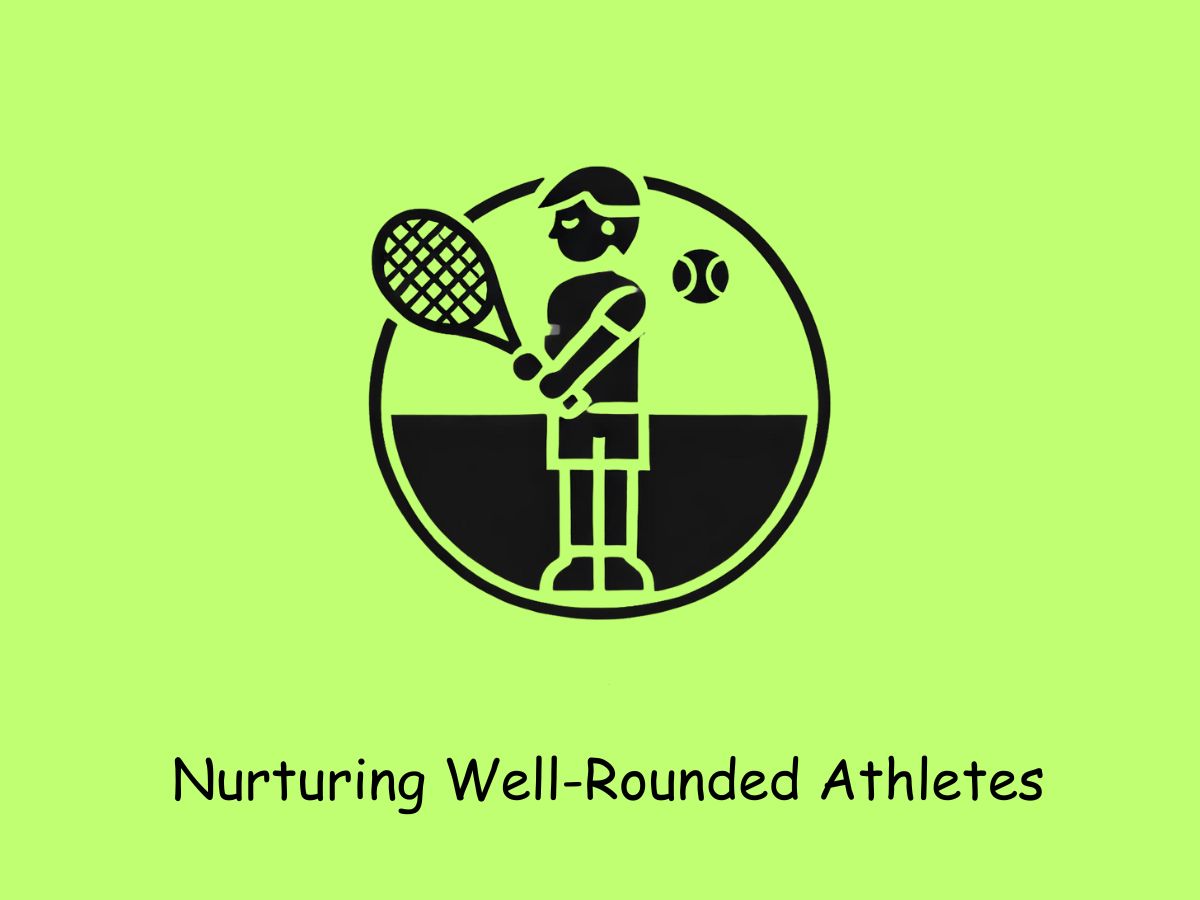
Being a great tennis player is about more than just what happens on the court. It’s important to develop as a whole person. This means focusing on your physical, mental, and emotional growth. A well-rounded athlete is more likely to succeed in tennis and in life.
One way to become well-rounded is to try other sports and activities. This can help improve your overall athleticism and prevent boredom or burnout from tennis. It’s also important to develop good habits off the court. This includes eating healthy foods, getting enough sleep, and managing stress.
Don’t forget about your mental and emotional health. Learn ways to handle pressure and stay positive, even when things get tough. These skills will help you on and off the court. Also, make time for your interests outside of tennis. This could be a hobby, spending time with friends, or learning something new. Remember, a balanced life leads to a better tennis player and a happier person69.
Conclusion
Now it’s your turn to take action. Use the information you’ve learned in this guide to help the young tennis player in your life. Watch them build strong skills, develop mental toughness, and find balance in their life.
Remember, every player is different, so be patient and supportive as they grow. Embrace the journey, celebrate small wins, and focus on overall growth. This guide has given you some strategies to nurture champions on and off the court.
If you have more questions or need help, contact me at jaiden@jaidensmedia.com. I’m here to support you in developing the next generation of tennis stars!
FAQs
What are the most important fundamentals for young tennis players to learn?
The most important fundamentals include independence, responsibility, continuous improvement, and a love for the game. These skills help young players grow both on and off the court.
How can I help my child improve their agility on the tennis court?
Simple drills like the “Ladder Drill” and side shuffles can improve agility. These exercises help players move better and react faster to shots.
What is the best grip for a beginner tennis player?
The Eastern grip is a good starting point. It gives a nice balance of control and power for hitting different types of shots.
How can I help my child develop mental toughness in tennis?
Practicing mindfulness can help players handle tough thoughts and emotions. Coaches can also create a positive environment where players feel supported.
What kind of strength training is safe for young tennis players?
Focus on learning proper form and technique rather than lifting heavy weights. Exercises that use body weight, like push-ups and squats, are great for building strength safely.
What is a good game strategy for young tennis players to learn?
Players should learn to play to their strengths, aim for their opponent’s weaknesses, and control the court space. Variety is also key in tennis strategy.
How can young athletes balance tennis, academics, and personal life?
Setting clear goals, managing time well, and making time for friends and family are all important. It’s also helpful to talk to parents, coaches, or teachers if feeling overwhelmed.
What should young players focus on during tournaments?
Focus on more than just the score. Pay attention to how they handle pressure, make decisions, and adapt to different opponents.
How can I help my child become a well-rounded athlete?
Encourage them to try other sports and activities. Help them develop good habits off the court, like eating healthy and getting enough sleep.
What should I do if my child feels burnt out from playing tennis?
Make sure they have time for interests outside of tennis. This could be a hobby, spending time with friends, or learning something new. A balanced life leads to a happier person and player.
